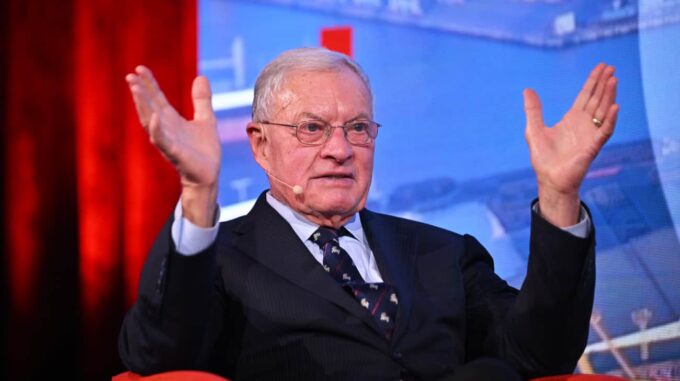Deployment of a diplomatic game: Kellogg voices ambitions for ending the war and returning Russia to international structures

The U.S. Special Envoy for Ukraine, Kit Kellogg, recently made a sensational statement during a forum in Brussels, which immediately drew the attention of the international community. According to him, Washington seeks not only to bring an end to the armed conflict on Ukrainian territory but also aims to return Russia to the path of diplomacy and cooperation through “a return to the League of Nations”—a historic international organization for supporting peace and security. Speaking from the podium of the German Marshall Fund Forum, Kellogg emphasized that the U.S. has a clear idea of what the final resolution of the conflict could and should look like. According to him, the strategy involves several successive steps, the first of which is a ceasefire exactly where active hostilities are currently taking place. Specifically, this refers to an immediate ceasefire along the front line, which should stop the bloodshed and open the possibility for long-term solutions. Furthermore, the U.S. plan includes the return of hostages and prisoners held in temporarily occupied territories, particularly in the areas of active fighting. Kellogg stated that this component can make any ceasefire stable and long-lasting, as the return of detainees will serve as an important symbol of trust and progress. Regarding the broader international resolution goal, the diplomat said: “We aim to return Russia to what I would call the League of Nations. This is a collective structure that unites countries for cooperation and ensuring peace. Everyone is interested in working together so that the results of this process become long-term and stable for Ukraine, Europe, and the entire world.” This statement emphasizes the U.S. and its partners’ pursuit of a compromising path out of the crisis but adds that the final decision depends on both sides, with Kyiv insisting not on conditions but on an unconditional ceasefire. Amid these statements, there has been increased speculation about possible scenarios for future negotiations, with Kyiv’s position being known and defined. At the same time, not everything is going smoothly. Moscow insists on its conditions, and their document, published at the end of May by Russian state news agencies, details Russia’s concept for a peaceful resolution. It envisages elections in the temporarily occupied regions, such as Zaporizhzhia, Donetsk, Luhansk, and Kherson oblasts, followed by the signing of an international peace treaty. The Kremlin also demands that Ukraine officially recognize the independence of these regions and recognize Crimea, annexed in 2014, as part of the Russian Federation. Additionally, among the conditions for ending the conflict are Ukraine’s neutrality, a rejection of joining any military alliances, and a ban on the deployment of foreign military formations on its territory. Notably, Moscow considers making Russian an official language in Ukraine as a necessary step to ensure “harmonious” relations in the historically complex and multiethnic Ukrainian space. As the situation intensifies, the U.S. and Europe are paying increasing attention to analyzing Russia’s intentions regarding the end of the war. Former U.S. President Donald Trump made a controversial statement on May 28, which caused much discussion in diplomatic circles. He said that in two weeks he would have an “answer” as to whether “Putin truly wants to end the war” in Ukraine. This hints at the possibility of a change in Moscow’s foreign policy calculations. While diplomatic negotiations continue on one side, Russian officials reaffirm their positions on the other. Deputy Chairman of Russia’s Security Council Dmitry Medvedev, in his comments on June 3, emphasized that the main goal of Russia’s participation in the peace talks in Istanbul is “to ensure Russia’s victory,” not to achieve peace in this war. This indicates that for the Kremlin, diplomacy is only one of several tools to attain strategic objectives, not an end in itself. Thus, the Ukrainian side and Western partners face a difficult task: to maintain this diplomatic momentum within the framework of peaceful resolution and avoid the threat of further escalation, while steadfastly defending Ukraine’s sovereignty and security interests. At the same time, the world is closely watching how new nuances and possible scenarios for the development of events unfold amidst this complex web of political and diplomatic maneuvers, with the aim of finding a path toward ending the war and stabilizing the situation on Ukrainian land.

